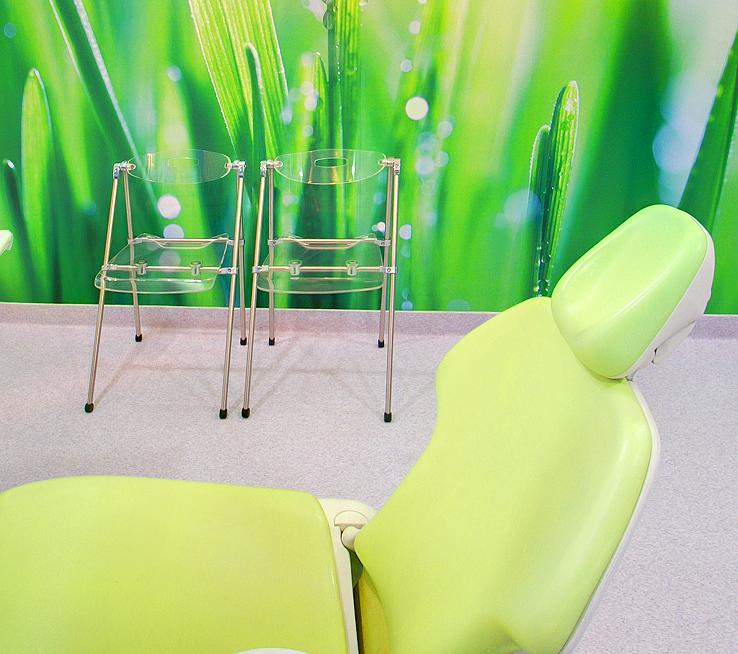Kids/ Paediatric Dentistry
BABY'S TEETH

The first teeth emerge at around eight months. The baby’s first teeth may appear earlier, while in others it may take more than a year. Usually the lower front teeth emerge first, followed by the upper front teeth. Until the age of two or three, all the teeth would have erupted in the mouth, including the canines and molars, twenty baby (milk/deciduous) teeth in total.
The Teething Period
From two months onwards, most babies begin to feel some pain or itching in the gums because the process of teething is about to start. The pain could be greater when teeth are erupting through the gums.
The teething process does not cause a high fever, so if the child has fever, speak to your doctor.
During teething, the baby drools and puts its hands or other objects in its mouth to bite on them. The baby may be uncomfortable, in pain and may cry more than usual. Appetite may decrease and sleep may also be impaired.
Parents can help the baby in several ways:
1. Apply the teething gel on the gums with your finger to alleviate the pain.
2. Put a teething-ring in the fridge to cool it (but not in the freezer since this would harden it) and then give it to the baby to bite on it. Do not tie the teething-ring around the baby’s neck due to choking hazards. Some babies also use their dummy to bite on.
3. If the pain is more severe or is hindering your baby from sleeping, speak to your doctor about medication that can be given to help your baby.
4. Wipe the saliva from the face to prevent a skin rash; if necessary, apply a little vaseline.
5. Do not force the child to eat and drink more than he/she wants.
Healthier Teeth
Parents should start taking care of the baby’s teeth from the very beginning, to keep the teeth nice and healthy. If the baby-teeth become decayed and have to extracted prematurely, the permanent teeth may not erupt in the correct place.
1. Do not dip the dummy in sugar, honey or juice. Try to stop the dummy as early as possible.
2. A bottle should only be used for water and milk. Do not bottle-feed the baby while asleep. From the age of one onwards, try to start using a beaker or cup instead of a bottle.
3. Do not add sugar or flavour-sensation to the milk. If you give a fruit juice, this should only be given once a day, and give it from cup and not from a bottle.
4. Do not give lemonade, sweet foods and drinks often.
5. Start brushing the baby’s teeth as soon as they emerge, twice daily with a soft toothbrush. Toothbrushing has to become a habit and daily routine.
6. Use an appropriate toothpaste (containing 900-1000 ppm flouride for infants and young children, and 1500 ppm flouride for children aged seven years or more). Use a very small amount of toothpaste. Teach older children how to rinse their mouth.
7. Take children for a dental check up regularly.
© 2012 Dr Joseph Mizzi MD MRCP MRCPCH
_________________________________________________________________________________________________________
KIDS CHECK-UP/ EXAMINATION
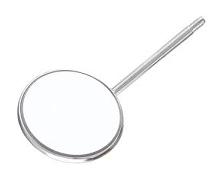 Everyone needs to have a regular check-up, including children form a young age. The main reason behind this is to give the opportunity to the MySmile dentist to tackle any initial conditions at the earliest stages in a preventive way or by providing conservative dental treatment, rather than requiring more advanced treatment. Most patients would require a check-up every six months but this can vary depending on the individual patient.
Everyone needs to have a regular check-up, including children form a young age. The main reason behind this is to give the opportunity to the MySmile dentist to tackle any initial conditions at the earliest stages in a preventive way or by providing conservative dental treatment, rather than requiring more advanced treatment. Most patients would require a check-up every six months but this can vary depending on the individual patient.During the check-up appointment, your MySmile dentist will check your kid's oral hygiene, the sequence of the eruption of the baby (milk/deciduous) teeth and eventually of the permanent teeth, whether there is any tooth decay and the condition of any existing restorations. Cavity detection through regular examination allows us to identify and monitor cavities from an early stage.
At MySmile we use cutting edge technology such as intra-oral cameras to take images of your teeth and gums. These images will be shown on dental-chair medical monitors while your dentist explains any details, enhancing communication and understanding between the dentist and the patient.
- At what age should my kids have their first dental check-up? The younger the child, the better. Ideally, at the age of 2 or 3. The first appointment usually consists of getting your child accustomed to a dental chair in a playful way, making use of soft toys and picture drawings. This will increase your kid's cooperation and will enable us to carry out any dental treatment which may be required in the future in a easy manner.
- How often do my kids need to have a check-up? Kids need a check-up every 6 months.
FILLINGS
_________________________________________________________________________________________________________
PULPOTOMIES/ PULPECTOMIES
_________________________________________________________________________________________________________
FISSURE SEALANTS
Dental fissure sealants are thin plastic tooth-coloured coatings that are applied to the grooves on the chewing surfaces of the back teeth to protect them from tooth decay. Most tooth decay in children and teenagers occurs on these surfaces. Sealants protect the chewing surfaces from tooth decay by keeping germs and food particles out of these grooves.
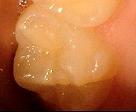
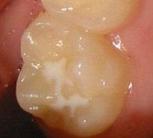 The permanent molars are the most likely to benefit from sealants. The aim of sealing these back teeth is to prevent tooth decay rather than having to place dental fillings after tooth decay develops at a later stage. Sealants are often applied as soon as the first permanent molars start to appear in the mouth which is usually between 6 and 7 years of age, when optimal oral hygiene is usually a bit lacking. If necessary, the second permanent molars are also sealed as soon as they erupt which is usually around 12 years of age.
The permanent molars are the most likely to benefit from sealants. The aim of sealing these back teeth is to prevent tooth decay rather than having to place dental fillings after tooth decay develops at a later stage. Sealants are often applied as soon as the first permanent molars start to appear in the mouth which is usually between 6 and 7 years of age, when optimal oral hygiene is usually a bit lacking. If necessary, the second permanent molars are also sealed as soon as they erupt which is usually around 12 years of age.BEFORE AFTER
The good news about sealants is that it does not require drilling the tooth to apply it and therefore no local anaesthesia is required. The process is short and simple. First the tooth surface is cleaned, a special gel is placed on the grooves of the chewing surface for a few seconds, following which the sealant is painted on the tooth. The sealant hardens immediately when a special blue light is applied onto the tooth surface. A sealant can last for as long as 5 to 10 years, by which time the child would have grown and oral hygiene should have improved. Sealants should be checked at each regular dental appointment and can be reapplied if they are no longer in place.
- How do I know if my child needs fissure sealants? Children who have had decay in their primary/baby teeth, need to have all the first permanent molars (of which there are 4) fissure sealed. Children who have had decay in any one of their first permanent molars should have all the second permanent molars (of which there are also 4) fissure sealed too.
TOOTH INJURIES/ DENTAL TRAUMA
When a child is involved in an incident which resulted in a blow to the teeth, lips or jaws, it is important to get a dental and oral examination to check if there has been any trauma which necessitates treatment.Frequently, it is obvious that treatment is required because teeth may have been knocked or chipped or there are cuts in the lips. In other cases, the damage may not be so obvious and may only be discovered during an examination at a dental clinic. Such cases include fractures of the root of the tooth and fractures of the jaw which are sometimes only visible on X-rays. It is very important to discover such conditions at an early stage to simplify treatment.
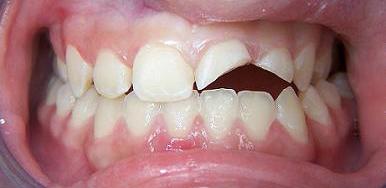
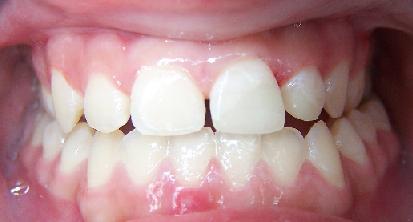
BEFORE TREATMANT AFTER TREATMENT
What to do in the case of a tooth injury?
Keep calm – to make sure you act quickly and do the right thing. Contact a dentist immediately in every dental accident.LOOSE TOOTH
If mild, it usually tightens up on its own. Very loose or displaced teeth need to be seen by a dentist within 4 hours.CHIPPED TOOTH
Look for the broken tooth fragment and take it with you to the dentist as soon as possible.PERMANENT TOOTH KNOCKED OUT
1. Hold the tooth carefully by the top (crown), not by the pointed end (root).2. Remove any debris by gently rinsing the tooth with water, milk or saliva.
3. Do not scrub the tooth or disinfect it.
4. Place the tooth by hand back into the socket.
5. Keep the tooth in place by asking the person to bite on a clean cloth.
6. Your child should be seen by a dentist for immediate treatment.
IF YOU CANNOT PUT THE TOOTH BACK IN ITS SOCKET
1. Do not let it dry out.2. Place it in milk or between the cheek and gums until seen by a dentist.
WATCH THE CLOCK
Every minute a tooth is out of its socket means that it has less chance of survival. A tooth has the best chance of survival if placed in its socket within 30 minutes._________________________________________________________________________________________________________
